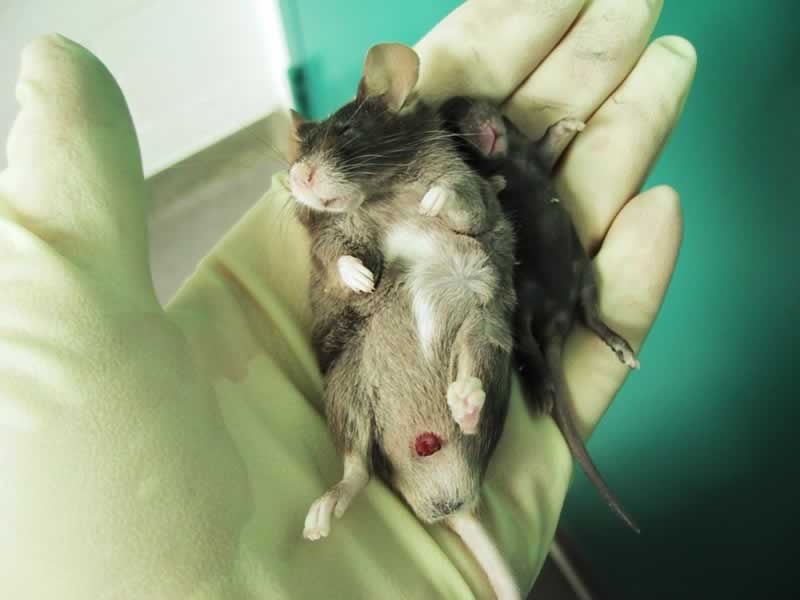Table of Content
If you’re interested in the exact method to follow with peppermint oil, our peppermint oil mice post goes into great detail on the matter. Chances are, if you’ve seen a mouse in your home, it’s the common field mouse. Your first instinct may be to place a mouse trap to kill the mouse, but this is only a temporary fix if you haven’t found where the mice are entering the home. Your best bet to help get rid of them is to call in a professional pest control specialist. Mice can survive on just three to four grams of food per day, so a few crumbs here and there are all they really need.

Garages often become storage space, and this leads to pests hiding around the clutter. Bait can be placed inside of the box to lure in the mouse, too. Once this is done, cover the top of the box with plastic wrap. The plastic wrap will act as a window into the box and will prevent the mice from escaping.
How long does it take to get rid of mice?
Not all of these sources can be easily removed, but by removing and reducing as many as possible, you avoid mice treating your yard like a late-night drinking and dining spot. Understandably, many homeowners want to use all-natural methods for mouse control. "If they get into the garage, they might just decide to live under your car hood, where the engine is nice and warm," warns Mannes. Once they start chewing on wires, they can seriously damage your car. Wrapping problem areas in rodent tape can help prevent mice from returning. Before mice can nest in your home, they need to find a way inside.

Also understand that if there are gaps around your home that remain unsealed, rodents can easily find them. Mice and rats are so sensitive to airflow, that just walking by a gap in your siding can pique their interest due to the warmth and smells. Keep an eye on your home and make sure there aren't holes or gaps rodents could climb into . These are another method through which you can catch hold the mouse alive and throw them out of the house.
Featured Products
There is also no hassle with storing and the usage is often very simple and easy. How you deal with a mice infestation depends on various factors. You can opt for some handy DIYs or get a store-bought mice repellent. Before you decide on either of these options, take a look at both of their pros and cons. Mice have a natural aversion to capsaicin, the ingredient found in cayenne, jalapeño, and other chili peppers.

Look for entry/exit points along the corners of your room and seal them off using a good sealant. You can also use duct tape, but make sure you use multiple layers to prevent mice from gnawing through it. Mice often end up gnawing off insulating materials and other fillers you place in between the walls of your home. Try putting steel wool instead, which is much harder to gnaw and can hinder the movement of mice. Rat or mouse urine can often leave an ammonia-like smell in the air, which can cause stuffiness. For example, trapping mice won’t be enough if you have an active entry point allowing mice into your home.
Start Sealing Food Properly
However, when populations get too large or when food becomes scarce, mice will start to establish new territories. This is when you might start finding them in your home! Mice nest in small, tight spaces where they are well hidden from predators. Keep your yard and surrounding area free of food, including pet food. When they’re not residing in your home, mice live in a variety of habitats, like fields, meadows and woods.
While spring is generally the best time for pruning, if you're just removing dead or broken branches, that can safely be done any time of year. After you've removed any mice roaming through your house, work your way down this list to make sure they — and any other rodents, for that matter — don't return. They’re always foraging for food, so the kitchen tends to be the hottest spot. Scan your pantry and cabinets for debris on shelves or gnaw marks on food boxes. Look for gaps and cracks in walls, along baseboards and windows, and around pipes, wire and drains. “Mice can get through holes as small as a quarter inch in diameter, which is about the size of a pencil,” says DiClerico.
Identify and Seal Entry Points
Put it in a spray bottle and spray it around the perimeter of your house, as well as in any indoor access points. Re-apply any natural deterrent you use at least once a month. Odd pet behaviorsuch as barking and scratching or pawing at or under appliances. This may indicate your pets are aware of a pest infestation.
They investigate and find places where the mice are entering. Many pest control companies also provide regular checks at your home. If you want to keep bird feeders in your yard, keep them as far away from the house as possible to avoid inviting mice and rats closer to your home.
If you don’t wish to cause any harm to the rats and you want to create a homemade mouse trap to solve your mice problem, here’s how you can try to make one. Hence, I recommend you place mothballs in places that are less accessible to them. Barn owls can also be the best outdoor mouse repellent as they are natural rodent predators. Hence, if your mice problem only affects your yard or barn, you can get a barn owl on your property.

You can use wood, but metal or concrete work even better. Never touch the droppings with your hands – use gloves. You never know what diseases or parasites the mice may be carrying. While roaming around your place, the mouse often leaves the footprints or tracks. If you found the marks of the four-toed front and five-toed back feet, then it is confirmed they are of a mouse. Though this may cost you few bucks, but will give you sure shot results of freeing your house.
By making your home less inviting and sealing up potential entry points, you can deter mice from taking up residence in your home. This includes crumbs, pet food, and open containers of food. Store food in airtight containers and keep your kitchen clean. Make your home less inviting by eliminating hiding spots.

Mice reproduce rapidly, meaning that even when the initial mice causing the issue are gone, there will be plenty of offspring left behind. Mice, on the other hand, are considered more curious and do not become wary of new things the same way rats do. Mice and other rodents spread a variety of viral and bacterial diseases. Amanda Rose Newton holds degrees in Horticulture, Biochemistry, Entomology, and soon a PhD in STEM Education. She is a board-certified entomologist and volunteers for USAIDs Farmer to Farmer program. Currently, she is a professor of Horticulture, an Education Specialist, and pest specialist.




























